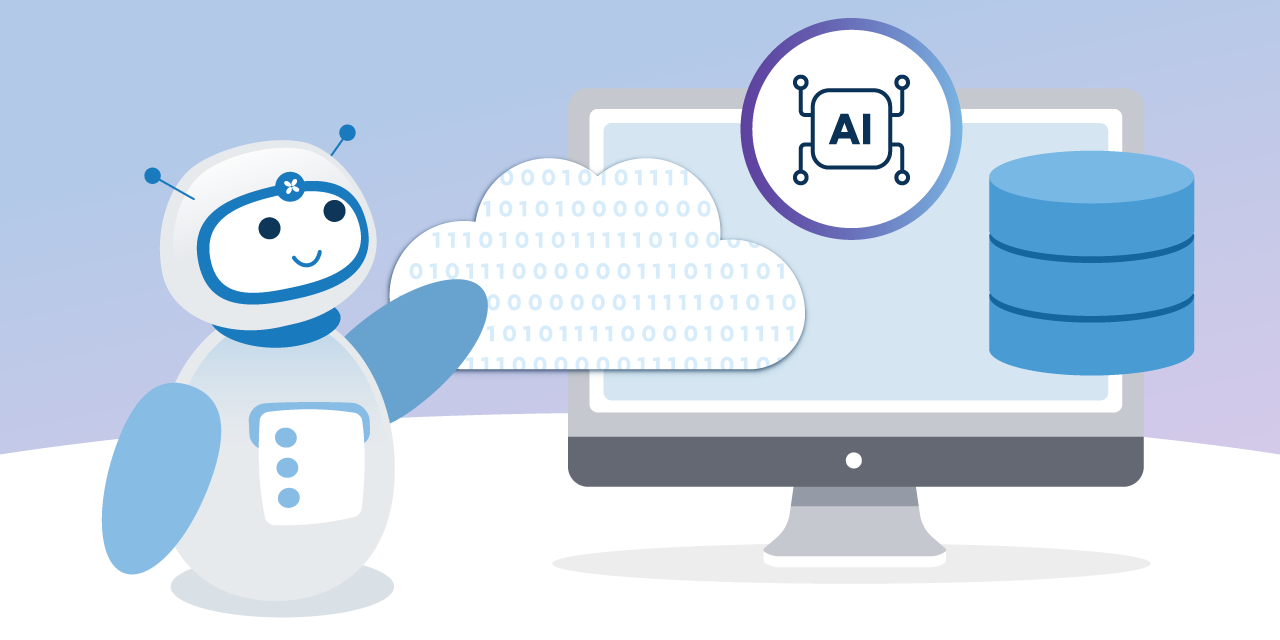The cacophony around “AI” has some of us rubbing our temples in frustration. In large part, the discourse is all chatter and no substance. Clear definitions, feasible strategies, and practical applications are few and far between, despite significant AI advancements and promised ROI.
Business leaders are caught in a tug-of-war between the risk of investing in the wrong technology and the risk of being left behind.
What should they invest in? How can they determine an effective strategy that delivers short-term gains while scaling for long-term success?
AI’s maximum potential value lies in combining emerging tech, like gen AI and agentic systems, with proven foundational technology. One builds on the other. In fact, according to McKinsey, up to 17 trillion of AI’s potential 25 trillion-dollar impact comes from foundational capabilities like specialized AI and advanced analytics.
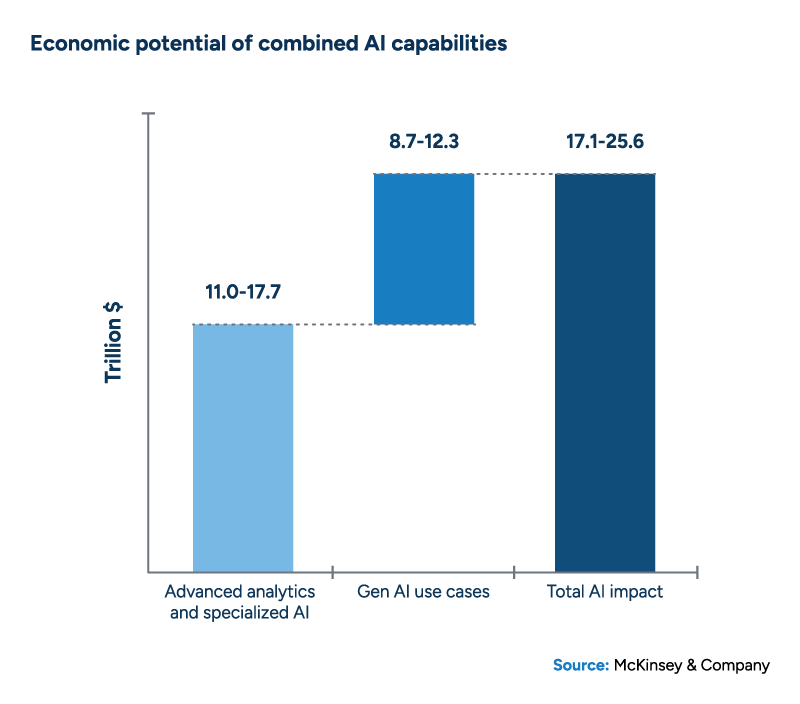
At RELEX, our mindset and planning solutions already reflect this reality. It’s why we’re not scrambling to play catch-up.
Our approach focuses on what we call “AI diversification,” employing the right tool for the right task and ensuring those tools complement and integrate with each other. This modular approach delivers fast ROI, scalability, and long-term value.
Let’s dig into the advantages of this approach, the different types of AI we’re using and developing, and the benefits our customers are already reaping.
The advantages: How RELEX AI diversification makes the most of your tech investment
AI diversification involves investing in different types of AI that perform distinct functions while operating collaboratively to maximize efficiency and profitability. It’s the best way to safeguard your investment in technology. You don’t get fixated on flashy AI trends that blind you to the advantages – and necessity – of quieter AI capabilities. At the same time, you’re integrating innovations as they become available, so you don’t lose your competitive edge.
To get the most out of each type of AI, you need all the other types, but you don’t have to implement them all at once.
A solution suite with a diverse AI portfolio allows companies to lay out a cohesive strategy that integrates new technologies in a timely but methodical manner. You can achieve near-term benefits while maintaining and scaling your AI toolkit to continue to realize a return on investment far into the future. If you reinvest this ROI, you can kick off a self-funded cycle, building on and increasing the value and longevity of that initial investment.
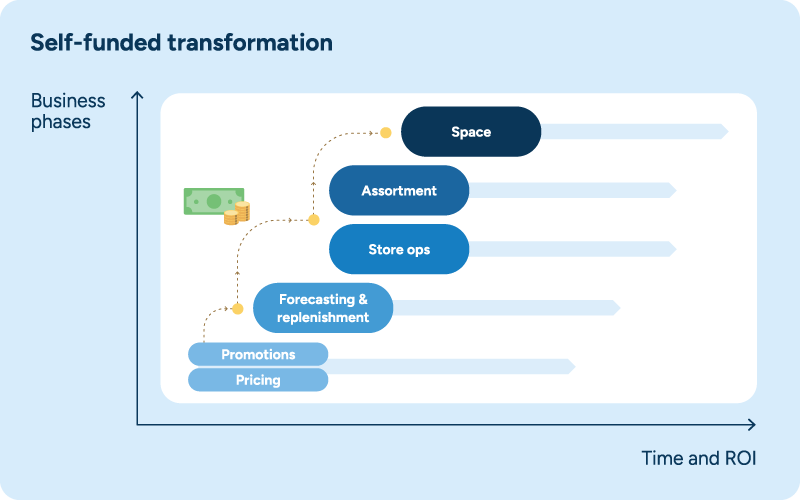
The RELEX platform makes this possible because it is AI-native, meaning it has been built to support and integrate AI capabilities since its inception. AI is a foundational element, not an afterthought.
Plus, we stay ahead of technology trends by investing around 25% of our revenue back into R&D, accelerating development cycles, and giving our customers a technological head start in the market.
The components of AI diversification
RELEX AI falls into three categories: agentic, generative, and specialized. Each has its own distinct functions, contributes to the value of the others, and integrates with the wider platform.
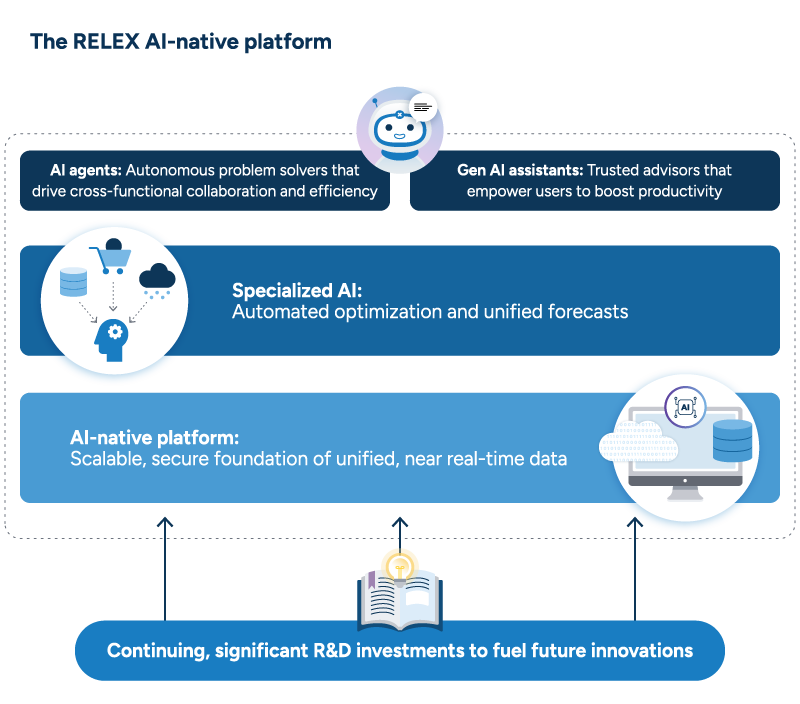
Agentic and generative AI enhance speed, problem-solving, and productivity. They are supported by the specialized AI capabilities that form the backbone of every RELEX solution, sharpening accuracy and speeding up decision-making.
The RELEX unified platform connects these AI capabilities with real-time data and planning functions across the organization. It allows companies to share insights and scale process improvements across planning and execution.
In this way, the solution provides the foundation of specialized AI, data insights, and best practices that agents and gen AI assistants need to be effective.
Let’s delve into the mechanics and benefits of each AI component.
Generative and agentic AI
The top layer of the RELEX platform brings together gen AI assistants and AI agents. At first glance, these capabilities are very similar, both relying on LLM systems.
Like gen AI, agentic AI can feature a chat box where users enter questions and commands and receive AI-generated replies, but there are also agents that run silently in the background and do not interact with users at all.
The behind-the-scenes functions and the nature of their output differentiate these two complementary technologies. In retail and supply chain use cases, generative AI creates content like reports or insight summaries, while agentic AI focuses on task completion and autonomous decision-making.
What is gen AI, and how do RELEX users interact with it?
In the business world, gen AI usually refers to large language models (LLMs) that synthesize and communicate data in easily digestible ways. These LLMs can create new content based on what they have learned from existing content and materials.
Gen AI assistants answer questions and provide information without taking direct action. They primarily offer knowledge-sharing and productivity-boosting support.
For instance, at RELEX, we’ve developed Rebot, the first gen AI assistant in the retail and supply chain planning space. Rebot is plugged into the RELEX knowledgebase, equipping Rebot with 20 years’ worth of our documented best practices. We continually update this living repository with our latest developments and learnings.
Continually learning from this resource, Rebot answers general supply chain questions and provides solution-specific assistance, acting like a trusted advisor to upskill less-experienced users.
Rebot has answered hundreds of thousands of queries since its launch in 2023. Since then, our customers have reported productivity gains like:
- A faster, less resource-heavy onboarding process.
- Greater autonomy through self-service channels.
- Easier, more efficient daily operations.
- Value-driving adoption and understanding of the RELEX solution.
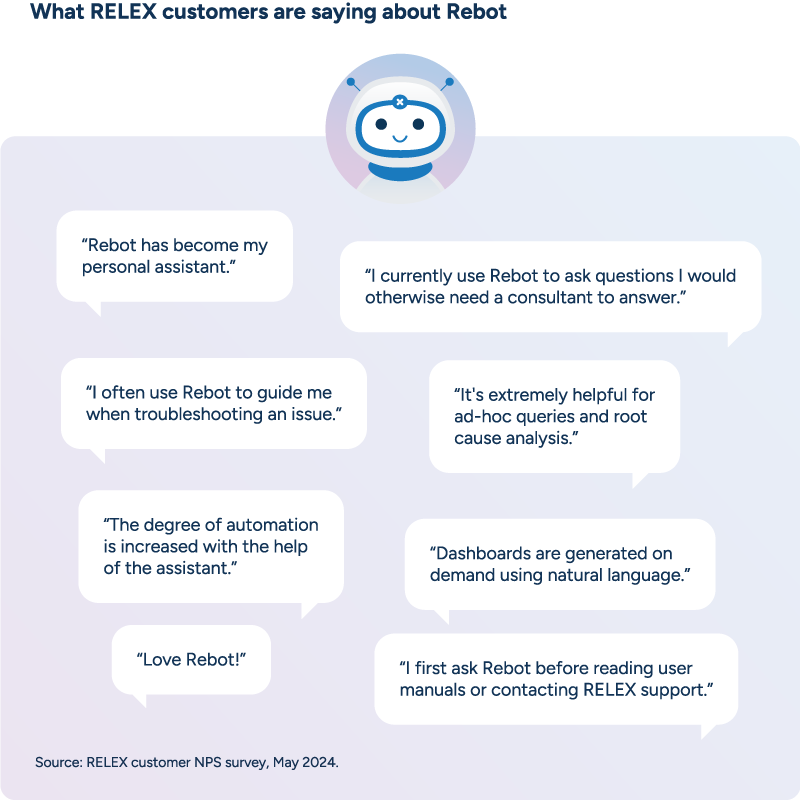
The takeaway: As a best practice and solution information resource, Rebot delivers productivity gains through continuous learning opportunities and a better user experience.
Why the RELEX approach to agentic AI promises better value
Rebot is just getting warmed up. In fact, we’re actively developing it into the RELEX user’s all-purpose AI agent. It will be able to generate company-specific insights (without storing or training on proprietary data), recommend and execute plans, and interact with other agents within a multi-agent system.
This evolution illustrates the increasing overlap between generative and agentic systems; agents are the natural evolution of gen AI assistants. They augment the natural language functions of generative AI with action-oriented capabilities.
But what are agents themselves?
AI agents: Promises vs. reality
AI agents are autonomous entities that act and adapt to achieve a specific goal, either individually or as a network of decision-makers. To achieve a goal, such as optimizing parameters to hit a service level target, agents call on different tools (and even other agents) to complete tasks. They then assess outcomes to see if the goal has been achieved. Running in these goal-oriented loops, agents help companies increase the speed, efficiency, and business outcomes of their planning processes.
Sounds good in theory, but according to Gartner, 40% of agentic AI projects will be canceled by the end of 2027.
Business leaders face one of two dangers when investing in AI agents.
The first is the lure of shiny new, stand-alone agents that promise a lot but have no proven toolkit for tackling industry challenges, increasing the chances they’ll hallucinate.
The second is the dubious effectiveness of agents built on top of outdated planning solutions that already fall short in delivering value.
Your agents are only as good as the tools and data you provide. They can’t fill in the gaps of a poorly performing solution. They can only magnify its outcomes.
However, with an AI-native platform supplying the tools and context they need to be effective, agents become the next avenue to competitive differentiation.
How RELEX builds expert AI agents
At RELEX, the agents we’re developing and piloting have all the resources they’ll need to identify and solve industry-specific problems.
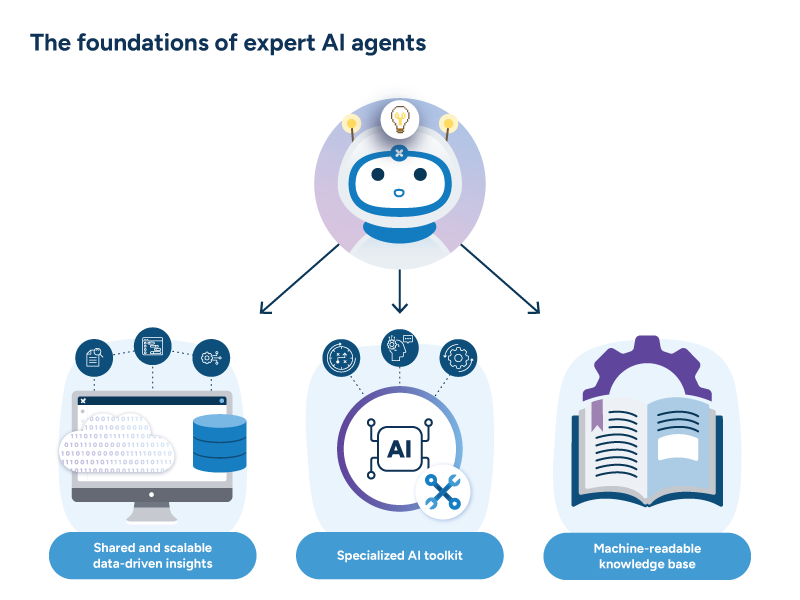
First, they have access to the same documented best practices Rebot uses, giving them a foundation of supply chain and retail knowledge.
Second, the agents’ toolkit features specialized AI capabilities, including algorithms trained on decades of manufacturing and retail data and capable of addressing industry nuances—from ice cream production to DIY assortments. With this foundation, specialized AI vastly improves calculations on a network-specific level, and agents will be able to enhance that performance.
Lastly, agents will have access to near real-time, quality data and RELEX Diagnostics insights that will allow them to understand and track product performance.
Interested in specifics? Learn more about RELEX agents and use cases.
The RELEX multi-agent system
Eventually, these agents will interact with each other, creating a multi-agent system.
In a multi-agent system, the user interacts with a single interface while multiple specialized agents work in the background to complete the user’s request. The workflow might look something like this:
- Agent A routes the request.
- Agent B gathers information.
- Agent C analyzes the data.
- Agent D formats the response.
This all happens seamlessly behind a single conversation, sparing the user from having to call on each of these agents individually.
As mentioned, Rebot will eventually become this gateway to all agentic capabilities – a single user interface for a simplified, streamlined experience.
At the same time, however, companies won’t have to sacrifice transparency for convenience; users will be able to monitor agents via the business rules engine (BRE). The BRE allows companies to configure settings and automate tasks through a graphical interface. making it easy for users to review agentic decisions and amend parameters as needed.
The takeaway: RELEX offers the tools, data, and practices that will make AI agents effective, culminating in a multi-agent network that improves and scales decision-making across organizations.
Specialized AI
While generative and agentic systems lie at the frontier of AI development, they rely on specialized AI that already delivers tangible business benefits to companies every day. Remember: most of the value of an AI implementation comes from specialized AI.
Specialized AI uses optimization capabilities and machine learning (ML) technology to perform highly specific tasks with superhuman speed and accuracy.
RELEX has been implementing specialized AI since long before the recent AI mania. In fact, all our customers already use it to cure modern supply chain headaches. Specialized AI has replaced spreadsheets and legacy planning systems that couldn’t keep up with data requirements and increasing complexity. Unlike generic approaches, it’s tailored to industry-specific challenges, providing powerhouse calculations that hone processes like forecasting, inventory optimization, production planning, and promotion planning.
Our specialized AI capabilities break down into three types: machine learning, mathematical optimization, and heuristics.
Machine learning is an advanced subset of AI that uses algorithms to analyze enormous data pools, generate output, and examine outcomes, looking for opportunities to improve accuracy.
In ML-based forecasting, for instance, ML algorithms assimilate supply chain information rapidly and analyze it for patterns, generating the forecast and reviewing inventory performance to fine-tune and improve calculations continually.
Across industries, these algorithms can incorporate recurring sales patterns, internal business decisions, and external demand factors, lifting the burden from human planners who would otherwise be unable to process and analyze the sheer amount of supply chain data generated.
Mathematical optimization considers all available options to determine the action that makes the best possible tradeoffs between conflicting requirements to achieve KPIs.
Complex environments in which multiple objectives and constraints must be balanced are prime candidates for optimization.
For example, a manufacturer or distributor may use optimization to analyze demand forecasts, transportation costs, and storage capacities to determine the most cost-effective shipment options that still meet customer SLAs.
Heuristics are rules-based engines that answer a set of questions, one at a time, eliminating options that do not directly serve specific objectives.
In simpler supply chain networks, heuristics are great for generating rule-of-thumb calculations fast.
For instance, a wholesaler with steady demand and a less complex distribution environment may set a rule to reorder products when inventory dips below a certain minimum, ensuring availability without complicated analytics. Heuristics are also a great method for kicking off rough-cut capacity plans that can later be refined with optimization.
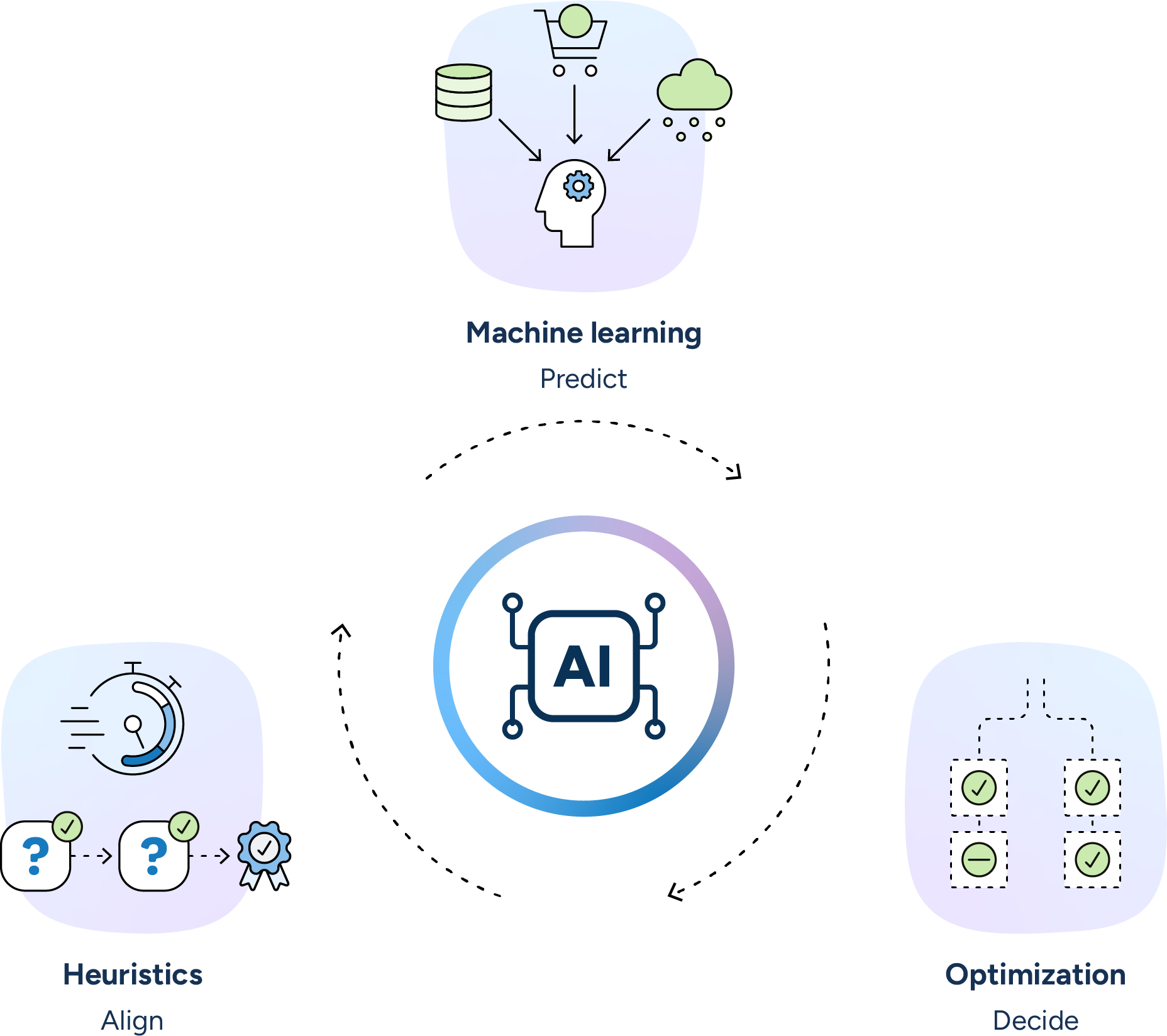
These capabilities work together to optimize planning outcomes. Machine learning models predict demand. Optimization balances requirements for data-fueled decisions. Heuristics provide fast answers in simple scenarios to keep goods flowing smoothly through the network.
The takeaway: Specialized AI rapidly analyzes massive amounts of data and refines calculations over time for more responsive, industry-tailored planning processes that improve accuracy, customer satisfaction, and profitability.
Want a deeper dive? See more practical examples of how specialized AI works.
How the RELEX unified platform makes AI scalable
Many companies are in danger of selecting an AI application…and then having no way to maintain it or weave it into other processes. An application shouldn’t be static or siloed. It needs to incorporate technological advancements easily, and it must seamlessly interact with data and other planning functions as companies grow.
The RELEX unified platform is a single, secure platform that syncs data and decisions across a suite of AI-powered planning functions and integrates the latest AI tools to unlock value at scale.
Teams using RELEX can easily share plans for improved accuracy because all of our AI-driven planning modules are linked to each other. For example, planners can use ML-based demand forecasts to tailor replenishment plans or design more effective space planning strategies.
Our planning functions pull from a single database of near real-time data. Thanks to this shared data pool, the AI is better trained, continually refining calculations and improving outcomes across the platform. AI, in turn, helps clean up data so companies can be even more confident in their decisions (and jump the first data hurdle many implementations face).
Learn more: Make datasets useful, not perfect.
The unified platform also integrates the latest technology from RELEX and our partners like Microsoft. The platform’s adaptability makes it easy for customers to adopt innovations like Rebot and – in the near future – AI agents.
The modularity of the platform’s solutions allows business leaders to customize their AI strategies to meet specific business priorities and map out self-funded implementation journeys with feasible milestones and achievable ROI that can be reinvested in future tech stack expansions.
The takeaway: The RELEX platform maximizes and sustains the return on tech investments through cross-functional collaboration, easy data sharing, and the continual integration of the latest AI developments. This gives companies the stability, scalability, and protection against inevitable market surprises to remain profitable and efficient.
Real-world benefits of AI diversification
By equipping companies with AI-diverse planning solutions, RELEX has helped retail and supply chain professionals extract valuable insights from their data, enhance collaboration and end-to-end visibility, and scale their businesses amid choppy market conditions.
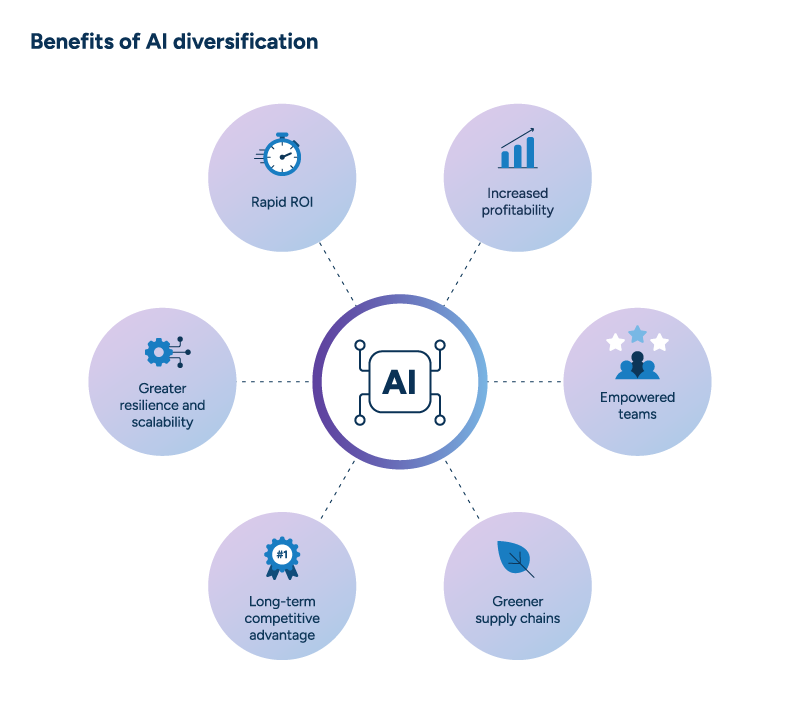
With the RELEX approach, our customers have achieved:
- Faster ROI for reinvestment in growth opportunities.
- Maximum cost savings and sustained profitability.
- Automation-driven efficiency for reduced waste.
- Expanded, strategic roles for users.
- A scalable, surprise-immune tech stack.
Among these many success stories is One Stop, a leading UK convenience store chain. One Stop uses machine learning to manage their ultra-fresh products and weather-sensitive items while avoiding promotion-associated cannibalization.
“You simply can’t overstate the value that AI-based forecasting brings to the retail environment,” said Richard Turton, Head of Supply Chain at One Stop. “RELEX’s machine learning drove an immediate improvement to forecast accuracy that we felt throughout the supply chain and store and DC operations.”
The company drove an 8.5% improvement in ultra-fresh product availability without a significant spike in spoilage rates and increased availability across its entire assortment, contributing to a significant sales increase.
“RELEX machine learning drove an immediate improvement to forecast accuracy that we felt throughout the supply chain and store and DC operations.”
One Stop is not alone. With a customer NPS score of 60 (above the industry average), RELEX has a proven track record of helping companies deploy the right AI technology to solve their industry- and business-specific problems.
MAAG Food, a leading dairy and meat company in the manufacturing industry, needed to move away from manual spreadsheet-based processes that relied heavily on email exchanges between departments. With RELEX, they adopted touchless forecasting, automating 96% of predictions through machine learning and exception-based logic. The company streamlined collaboration across sales, purchasing, and product portfolio teams while freeing planners to focus on strategic decision-making rather than routine forecasting tasks.
MAAG achieved a 22% increase in planning efficiency, an almost €99,000 reduction in revenue losses from discounted products over six months, and 100% user satisfaction among users.
“We were particularly impressed by their advanced, AI-driven approach and the flexibility of their inventory management systems.”
Camille Fratanduono, Senior Vice President of Inventory, Replenishment and Planning at Lowe’s, explained why the DIY giant chose to collaborate with RELEX and its partner Accenture: “Our selection of RELEX was driven by their proven expertise in the home improvement retail sector. We were particularly impressed by their advanced, AI-driven approach and the flexibility of their inventory management systems. RELEX is well known for their automation capabilities and their exceptional dashboard. Working with both RELEX and Accenture aligns with our ongoing commitment to leveraging innovative solutions to enhance our business processes.”
Other companies, like JYSK, were among those who had machine learning initiatives built into their business objectives.
“We wanted to make sure that we had a scalable solution, that we had good user interfaces, a high forecasting quality, and, last but not least, we wanted to introduce machine learning as a component in our demand planning process,” said Heine Sort, Flow of Goods Director.
Sort explained, “After a diligent selection process, RELEX was chosen because of the solution’s flexibility, which enables JYSK to be in full control of the process while benefiting from forecast improvements using state-of-the-art AI and machine learning.”
Looking ahead: Building a diverse AI portfolio
AI may seem a nascent field, but at RELEX, we’ve been refining our AI capabilities for years, constantly evolving to maximize value for our customers. Our full suite of AI-powered solutions is calibrated to outmaneuver industry obstacles, taking a targeted approach to challenges throughout retail, wholesale, and manufacturing so you can drive profitability and maintain a healthy, resilient supply chain, now and far into the future.
